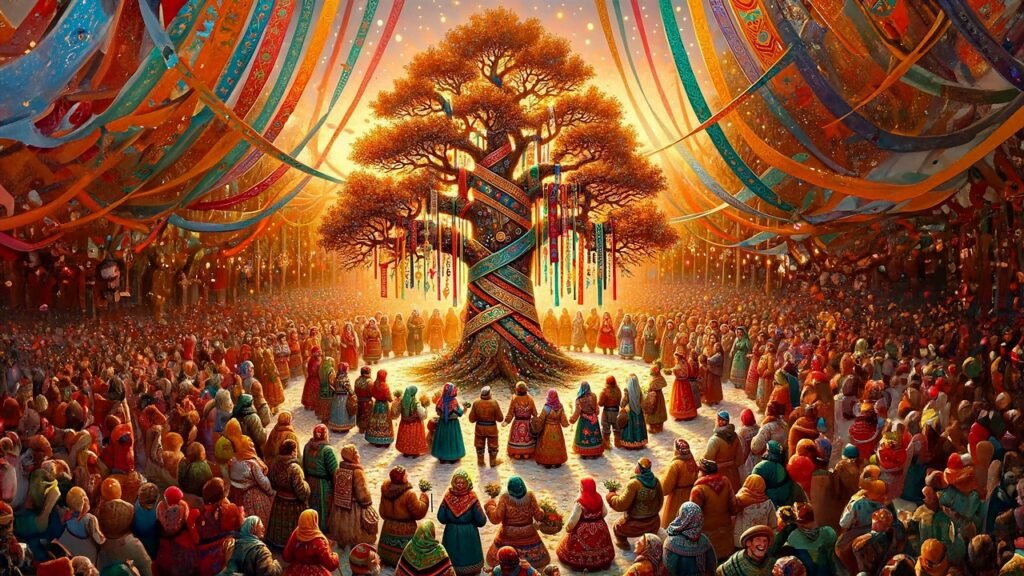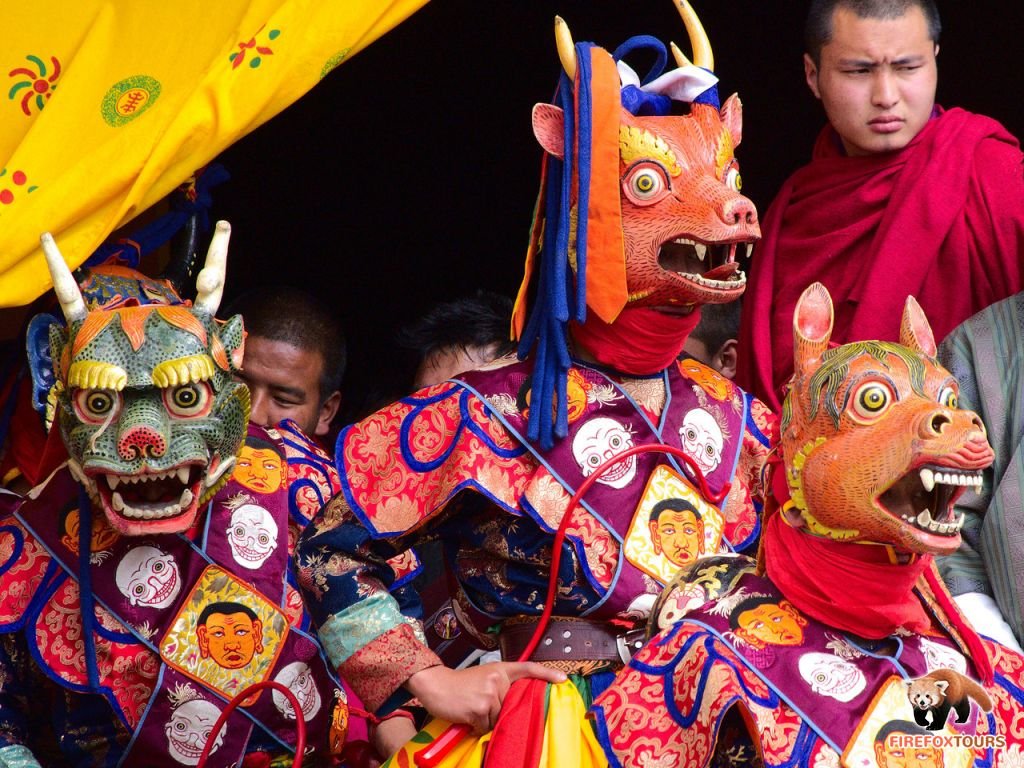The Far East is the eastern part of Asia. He understands :
- East Asia (Japan, Mongolia, North Korea, South Korea, China, etc.). For Japan, see Shinto
- Southeast Asia (Malaysia, Burma, Thailand, Laos, Cambodia, Vietnam, Indonesia, etc.)
- the Russian Far East, in particular the Pacific provinces and their hinterland.
Much of the Far East was influenced by the various Empires of China. Our list also includes the Oceania region.

Contents
ToggleFestivals in the Far East and Oceania
Holidays of the month
| Mymonday | Killtuesday | Wednesdaywednesday | ThuThursday | Frifriday | Satsaturday | Sunsunday |
|---|---|---|---|---|---|---|
26May 26, 2025 | 27May 27, 2025 | 28May 28, 2025 | 29May 29, 2025 |
30May 30, 2025●(1 event) KaamatanMay 30, 2025  Today the Kadazan-Dusuns of Malaysia celebrate Kaamatan. The Harvest Festival falls under what is known as Momolianism. There is a dance show called Sumazau, a singing contest called Sugandoi, a bodybuilding contest, and other arts and crafts shows. #mythology #myth #legend #calendar #May 30 #Kaamatan #Maya | 31May 31, 2025 |
1June 1, 2025●(1 event) Gawai DayakJune 1, 2025  Today, the Dayak people of Malaysia and Indonesia celebrate Gawai Dayak. Many religious, family and community rites take place over two days. #mythology #myth #legend #June 1 #dayak |
2June 2, 2025 | 3June 3, 2025 | 4June 4, 2025 | 5June 5, 2025 | 6June 6, 2025 | 7June 7, 2025 | 8June 8, 2025 |
9June 9, 2025 | 10June 10, 2025 |
11June 11, 2025●(1 event) Kamehameha –  Today, Hawaiians commemorate Kamehameha I. He was the first to conquer and rule the Hawaiian Islands. His grandson, Kamehameha V, erected a statue in his honor and made June 11 a national holiday. #mythology #myth #legend #calendar #June 11 #Kamehameha #Hawaii | 12June 12, 2025 | 13June 13, 2025 | 14June 14, 2025 |
15June 15, 2025●(1 event) Barsha UtsabJune 15, 2025  Today, Bengalis celebrate Barsha Utsab. This cultural festival marks the start of the monsoon season. #mythology #myth #legend #calendar #June 15 #bengladesh #barshautsab |
16June 16, 2025 | 17June 17, 2025 | 18June 18, 2025 | 19June 19, 2025 | 20June 20, 2025 |
21June 21, 2025●(1 event) Yhyakh –  Today, the Yakuts and Dolgans peoples (Turkic peoples of the Sakha Republic in Russia) celebrate the new year, Yhyakh. Winter temperatures sometimes reach −60°C, while summer is very short, lasting only three months. The festival of Yhyakh (which literally means “abundance”) is linked to the worship of a solar deity, with a cult of fertility. #mythology #myth #legend #calendar #June 21 #Yakut #Dolgan #Yhyakh | 22June 22, 2025 |
23June 23, 2025●(1 event) Saya –  Today, the Turkic peoples of the Tengri and Altai religion celebrate Saya Khan, the sun god. The blessing of this god brings fertility and abundance. The traditions are close to neighboring peoples, who celebrate Yhyakh on June 21. #mythology #myth #legend #calendar #June 23 #Saya #Tengri #Altai | 24June 24, 2025 | 25June 25, 2025 | 26June 26, 2025 | 27June 27, 2025 | 28June 28, 2025 | 29June 29, 2025 |
30June 30, 2025●(1 event) Chha –  Today, some people of Bhutan celebrate Chha. Coming from the Bon religion, the inhabitants make offerings to the local gods for their blessing. #mythology #myth #legend #calendar #June 30 #Chha #Bhutan | 1July 1, 2025 | 2July 2, 2025 | 3July 3, 2025 | 4July 4, 2025 | 5July 5, 2025 | 6July 6, 2025 |
Cultural areas in the Far East and Oceania
East Asia (or Eastern Asia) is a region of Asia, including: China, Korea (North Korea and South Korea), Japan, Mongolia (sometimes attached to Central Asia) , Taiwan, possibly Vietnam and Singapore, for cultural reasons (these countries are more generally attached to Southeast Asia for their geographical position), the Russian Far East can also be attached to this region.
China was the first colonized region in East Asia and was undoubtedly the core of East Asian civilization from which the other parts of East Asia formed. The various other regions of East Asia have been selective in the Chinese influences they have adopted into their local customs.
The religious phenomenon in the Chinese world is characterized by pluralism, favored by the attitude of the State: since the beginning of the empire (3rd century BCE), the latter has exercised careful control over groups likely to constitute a threat. for power and society and brings overly active sects into line, only exceptionally granting exclusivity to a cult. Syncretism and mixing are common, making the contours of religious groups blurred; we have the impression of being faced with a constellation of philosophies and practices rather than confessions.
Taoism, or rather the Taoist currents, appeared from the 2nd century, inspired by the currents of Yin and Yang and the Five Elements, as well as by the writings of the philosopher Lao Tseu (or Lao-tseu) (老子) dating from the mid-first millennium BC BC, including the famous Book of the Way and Virtue (Tao Tö King), is, with the Book of Changes (Yi Jing), at the sources of Chinese esotericism. These currents were constantly enriched with new influences and provided the whole of Chinese religion with many of its concepts and practices as well as a number of deities.
Founded on the teaching of the life of Confucius, notably through his Analects and the works of his disciples such as Mencius, Confucianism (rujiao 儒教) was established as a state doctrine, reaching its peak during the Song dynasty. Naturally devoted to the interpretations of the ruling dynasties, the original doctrine of Confucius is however not necessarily synonymous with submission to institutions, as some contemporaries observe. Historically, however, Confucianism helped to impose the ideology of the “five relationships” between subjects, intended to strengthen social order and the cosmic link between hierarchical position and celestial virtue.